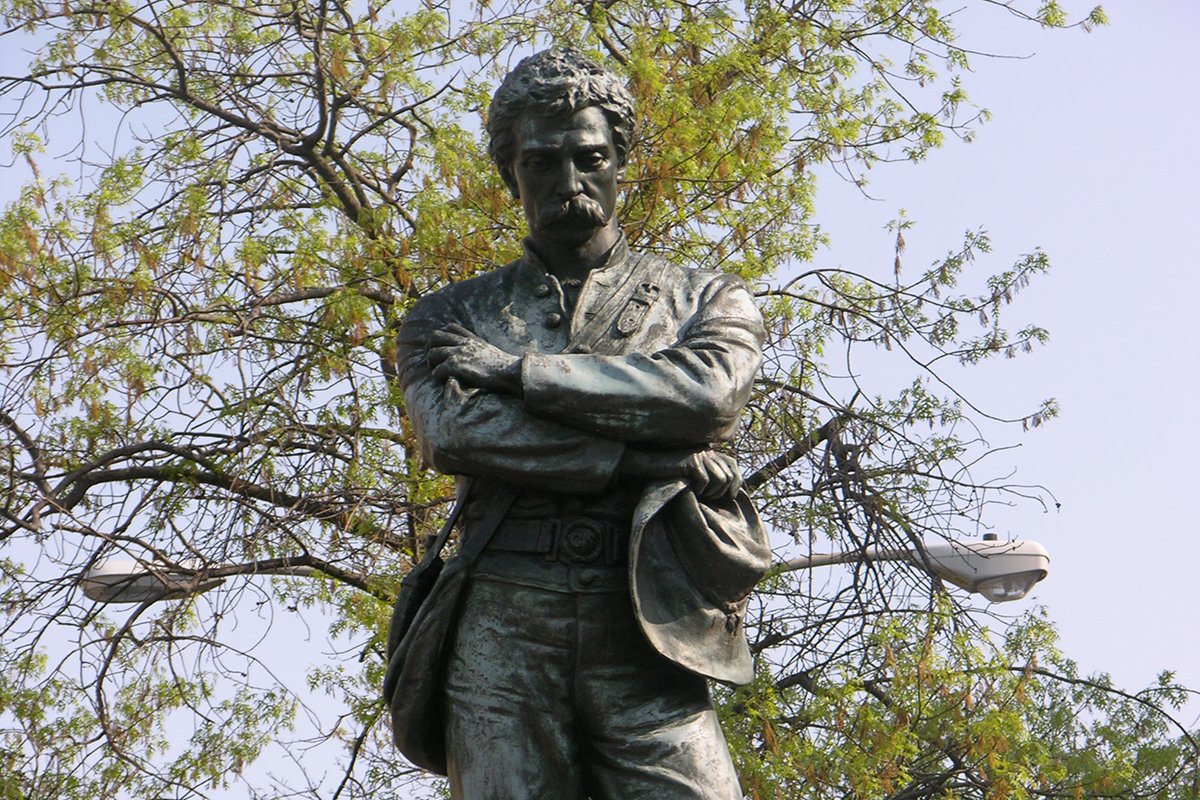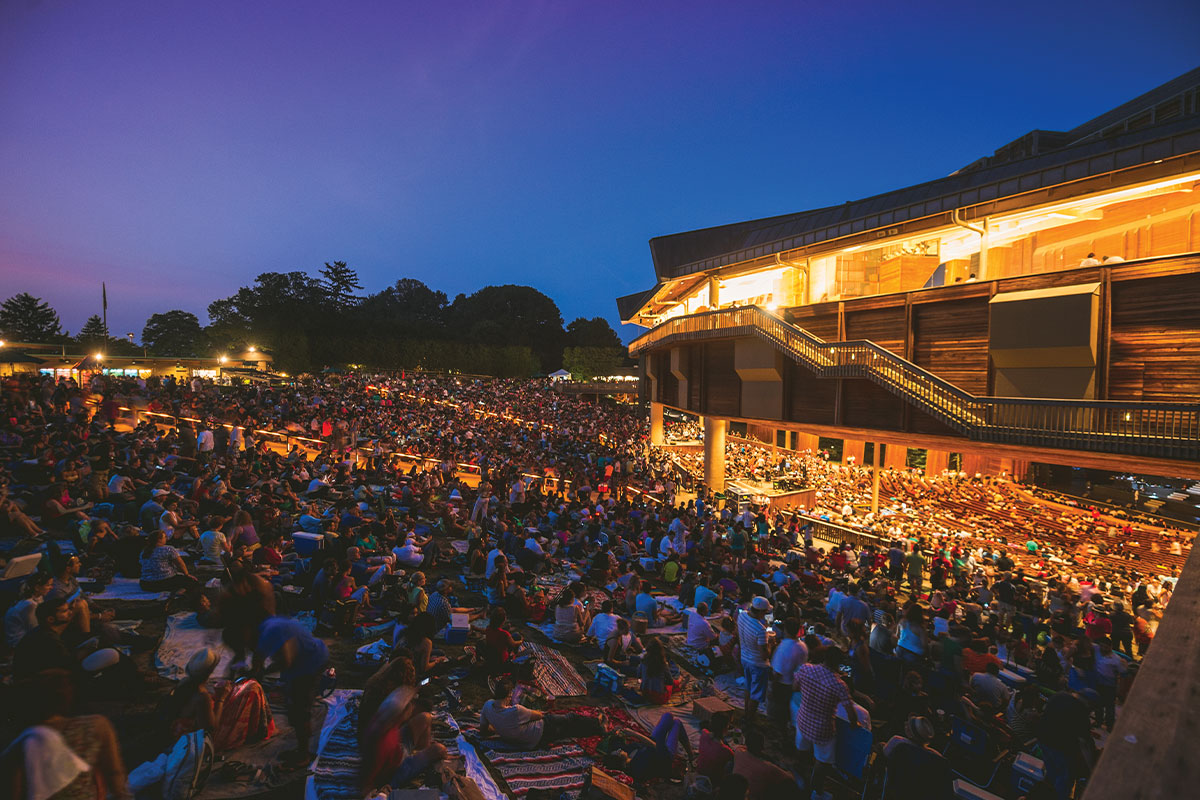
To say the issue of Confederate monuments in Northern Virginia is complicated is a huge, serious and emotionally charged understatement.
Consider this: On Memorial Day in 2009, a sitting American president had an aide lay a wreath at a monument honoring the Confederate dead from the Civil War who are buried at Arlington National Cemetery, something nearly every president since the end of World War I has done.
That president honoring rebel soldiers was Barack Obama, the nation’s first black president.
That 32-foot-tall Confederate monument was designed and built by a Jewish sculptor and Confederate veteran, Moses Ezekiel from Richmond, who is buried at its base.
In that section of the cemetery lie the remains of over 400 Confederate soldiers, some of their wives and other Southern citizens, buried in a concentric circle emanating from the monument’s base. Their tombstones have pointed tops to “keep Yankees from sitting on them,” according to Confederate legend.
That’s just one example of the complexities of the Confederacy issue in Northern Virginia.
The August rally and protest in Charlottesville, which the Southern Poverty Law Center reported as the largest gathering of white supremacists in 40 years, has again forced the discussion of what this and other Confederate monuments mean and what should be done about those and other places (like schools and streets) named for Confederates.
Arlington, Alexandria, Fredericksburg and other cities in Northern Virginia are working now on plans to either take down or move monuments and/or rename streets and schools.
Arlington in fact doesn’t have any monuments to consider and is instead concentrating on school and road name changes, with a focus on Jefferson Davis Highway right now, or Route 1, which enters Arlington from Alexandria, its origin point, and ends in this area at the 14th Street Bridge (it’s actually part of an old and difficult-to-track intercontinental highway that terminates in San Diego).
Arlington residents will be given the opportunity to suggest the new name. But there are sticking issues. “It’s a lot easier for Arlingtonians to change the Jefferson Davis Highway name,” Jay Fisette, chair of the Arlington County Board, says. “But it’s different for Robert E. Lee. They view his participation in the Civil War in a variety of ways. What you hear a lot from them is that these changes are about changing history, and how you make the distinction between slaveholder and Confederate leader,” he says. “It’s about where you draw the line.”
Arlington County had been discussing changing the name of Washington-Lee High School even before Charlottesville, Fisette says. Now as some new high schools are coming to the county, the naming policy for those schools will be included with the renaming process of Washington-Lee regarding links to the Confederacy.
Alexandria is doing its own due diligence on changing the name of Jefferson Davis Highway, but the greater challenge for the city is the Appomattox statue honoring the Confederate dead from Alexandria, which has stood prominently in the center of the intersection at Prince and Washington streets since 1889, just a few blocks away from a slave museum where slaves were held in small jails before being auctioned off in Alexandria.
The statue, owned and maintained by the United Daughters of the Confederacy, has been protected by Virginia state statute since it was erected, meaning that it cannot be moved without action and approval by the state legislature.
The city recently did a study where it was agreed to move the statue
from the intersection and potentially put it in near the Lyceum, Alexandria’s history museum.
Craig Fifer, director of communications for the city of Alexandria, says that the move does not represent a significant physical move but “a very symbolic move.”
“Since the events in Charlottesville, two members of the General Assembly have indicated that they plan to file legislation for the January session that would allow the city to move the statue,” Fifer says. “So the next step is for the General Assembly to decide whether or not to change the law. It is certainly possible that the mindset of the members will have changed a little bit since last year given the events that have occurred since then.”
The city has not done any sort of appraisal or estimate on what it would cost to move the statue, Fifer says. “Our impression is that it would be a very delicate operation that would involve conservation experts. So we could be looking at a cost of tens of thousands of dollars to remove it.”
The statue could be removed as early as January 2018, but there are still some variables related to enacting the bill that need to be settled first.
Fredericksburg, the hometown of George Washington’s mother, Mary, is also wrestling with relics from its past. Just after the events in Charlottesville, town councilman Chuck Frye Jr. brought forth a proposal to look into removing the 3-foot-tall slave auction block memorial that sits at the corner of William and Charles streets. After public input meetings the council met on Sept. 26 and voted 6-1, with Frye opposed, to have the slave block remain, but the city does plan to hold more meetings to determine how to appropriately present the slave block to give more context to its presence.
In Fairfax County, after two years of discussion, school board members voted on July 27 to rename J.E.B. Stuart High School. According to the Washington Post, renaming will begin in the fall, and the new name must be in place no later than the beginning of the 2019 school year.
After receiving input from the Stuart community, the school superintendent has chosen the top five names selected during the first community vote on Sept. 16 as a recommendation to the school board. The board will have a work session on Oct. 16 and will take action 10 days later. Of the five names chosen, the top community vote-getting name was Stuart Raiders, though the board decided in late October to change the name to Justice High School.
The name change is expected to cost just over $800,000.
Opinions on these moves are split. Residents of D.C. and Arlington who were polled informally about their opinions on the removal of Confederate monuments (and who preferred to remain anonymous) showed the divide that still exists: Three African-American federal employees agreed that all the monuments should either be taken down or put in a Civil War museum, maybe down at the Mall, explaining the war and what it meant to the area both then and now. A white Alexandria businessman explained that it makes no difference and that the money spent to move them could better be used elsewhere by Alexandria, explaining that the war happened, it’s part of Alexandria’s history, and the monuments for the most part should stay where they are.
But for now, the common message from all city and county governments about the issue of moving Confederate memorials and the impact of Charlottesville is that it creates a better understanding of the Civil War and its aftermath. “I would say we can heal from this,” Fisette says about what happened at Charlottesville and how it has impacted the area. “Everything takes time. And look how much better it is today. There has been a lot of progress. That said, the images of Nazi signs and people speaking positively about and holding up signs of Adolf Hitler, something that should be so far in our past—that would make anybody’s blood curdle. That is horrific. The fact that you have these folks without masks be emboldened and organized and feeling a sense of righteousness is really scary.”
Arlington’s other History Conundrums
Though Arlington doesn’t have any Confederate monuments to take down or move, it does have some other examples of then-now conflicts from the past with similar themes.
Here are two examples:
1. Although the land is owned and maintained by the federal government and not Arlington County, the Arlington National Cemetery, 624 acres and half a million burial plots, has its own history of confusing ownership and allegiances.
This plot of land was originally owned by the step-grandson of George Washington.
He then willed it to his daughter, Mary Custis, the wife of young soldier and engineer Robert E. Lee, a graduate of West Point and future leader of the Confederate army.
After the war, the land was taken by the federal government in a controversial legal move and used as a cemetery for Civil War dead, including Confederate soldiers.
2. The World War I memorial, located in Clarendon Central Park, is a tall stone monument featuring a prominent bronze plaque listing all the Arlington residents who died in that conflict. Separated from a list of 11 who died fighting for the freedom of this country are two other men who also died in that war: Pvt. Arthur Morgan (buried at Arlington Cemetery) and Pvt. Ralph Lowe. Behind their names, the word “colored” appears in parentheses. An Arlington task force is studying what to do with the memorial.
Source: Arlington National Cemetery website; Arlington County World War I Commemoration Task Force
A monumental task
If a decision is made to remove all references to the Confederacy across the country, here’s just a sampling of what would need to be considered:
1. There are over 718 monuments and statues in the U.S., with about 300 of them in Georgia, Virginia or North Carolina.
2. There are 109 public schools named for Robert E. Lee, Jefferson Davis or other Confederate notables.
3. There are 80 counties and cities named for Confederates.
4. There are nine official Confederate holidays in six states, including Lee-Jackson Day in Virginia.
5. There are 10 U.S. military bases named for Confederates, including three in Virginia: Fort Hill, Fort Lee and Fort Pickett.
6. In total, there are at least 1,503 symbols of the Confederacy in public spaces. These include monuments and statues; flags; holidays and other observances; and the names of schools, highways, parks, bridges, counties, cities, lakes, dams, roads, military bases and other public works. Many of these are prominent displays in major cities; others, like the Stonewall Jackson Volunteer Fire and Rescue Department in Manassas, are little known.
7. Charts show that many of the Confederate monuments were erected not at the end of the Civil War but during two key moments of racial tension in this country: the Jim Crow era, around 1900 to 1920, peaking in 1909; and the Civil Rights era from 1957 to 1970, peaking around 1963.
Source: The Southern Poverty Law Center




